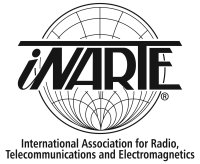Who Do You Blame When Your Facility Has Equipment Failures, System Failures And Downtime?
Your own facility causes 80% of the equipment failures, system failures and downtime that occur at your facility. The other 20% is caused by your utility company. Most end-users don't know that utilities are not responsible for providing whatever power quality the end-users need.
The quality of utility power systems throughout the United States has not significantly degraded. What has changed is that today we are a heavy user of digital solid-state electronics. This “power quality and voltage susceptible” technology has accentuated imperfections in the power supply to and within the facility which have always existed. Although these problems are not always easy to identify and sometimes expensive to investigate, once they are identified and resolved a very high degree of reliability can be restored to the facility.
Power fluctuations happen multiple times a day, potentially simultaneously, and typically without advanced warning. In most cases the equipment that powers the productivity area is vulnerable to such relatively commonplace occurrences, it is in the facility’s best interest to address these power anomalies.
Equipment failures, system failures and downtime brings production and productivity to a complete standstill. Unfortunately, in most cases the root cause of equipment failures, system failures and downtime is never found. The plant manager brings the production back on line and waits for the next event that continues to cause downtime.
Industry analysts estimate that over a ten-year period yearly downtime costs at factories can average between 5-20% percent of their productive capacity. If you do the math for your facility over the ten-year period, you can see the money that you could either chose to continue the losses or use to invest in eliminating equipment failures, system failures and downtime. Collectively, the U.S. Department of Energy estimates that the U.S. economy loses more than $120 billion in productivity every year to poor power quality and reliability.
A fall 2013 survey, from 92 executives in industries that rely heavily on electronic assets to drive their businesses, found that only 21 percent reported high levels of visibility into power disturbances that impact those electronic assets. Perhaps more shocking is the fact that more executives (29 percent) reported having no visibility into power disturbance issues, and a combined 78 percent of executives surveyed reported having either limited visibility or no visibility whatsoever.
At most facilities no tracking of total cost from equipment failures, system failures and downtime is logged or tracked. Most business just accept these equipment failures, system failures and downtime as a cost of doing business.
These equipment failures, system failures and downtime typically come from an electrical power disturbance. Causes of power disturbances are both numerous and commonplace in most businesses, in short, a power disturbance effects the normal clean 50-60 hertz wave form. Here are some of the most common groups of power disturbances.
- Transients
- Interruption
- Sag or Undervoltage
- Swell or Overvoltage
- Waveform distortion
- Voltage fluctuations
Here are just a few examples of that could cause a power disturbance:
- Starting a large piece of equipment
- Stopping a large piece of equipment
- Lightning strikes that occur at, near, or close by (direct strike not required, lightning can cause a power disturbance up to 9 miles away)
- Using equipment that generates microwaves or other high frequencies
- Improper wiring, either the wrong size wire for the load or excessively long runs
- Faulty or corroded connections somewhere in the network
Here are the some of the most common power disturbances that have a direct effect on power quality.:
- Harmonic Distortion
- Low Power Factor
- Pulse Width Modulation (PWM) Voltage
- Resonance
- Flicker
- Transformer or reactor overheating
- Equipment Malfunctions/Failure
- Transit voltage
Some Symptoms of Power Quality Issues
- Computer Locks Up or Crashes
- Electronic Component Damage
- Video Displays have wavy or slow rolling signal
- Nuisance Circuit Breaker Tripping
- Ongoing Blown Fuses
- Flickering and Short Life of Lamps and Ballasts
- Timing clocks run fast
- Noisy audio systems
- High equipment and systems failures
- Motor starting problems
- LED display missing part of the displayed number
Most of equipment failures, system failures and downtime from a power disturbance can be prevented at your facility by designing and implementing a Holistic Electrical Protection System. A properly designed Holistic Electrical Protection System includes backup power systems, coordinated surge protection for Ac, Dc, Telco, Data, CATV, CCTV equipment as well as protection for Radio Frequency Interference and other Electromagnetic Interference.
In order to effectively design, analyze, correct, and maintain a high-quality facility electrical protection system we recommend the following 5-Step Process:
- Identify the Problems - Identify the problems by performing an electrical evaluation of the facility
- Engineer the Solutions - Engineer the solutions by designing a Method of Procedure (MOP) for corrections
- Implement the Solutions - Implement the solutions by performing corrective actions
- Test and Commission the Solutions - Test and commission the solutions to ensure the performance of the corrected electrical protection system
- Train Personnel and Implement Standards - Train personnel and implement standards to maintain the effectiveness of the electrical system
By completing this entire process, any problems in the facility’s electrical protection system will be eliminated and personnel will be instilled with knowledge to help maintain the system. Through industry proven solutions, testing and commissioning the facility’s electrical protection system is thoroughly inspected and approved for use. By completing personnel training and the implementation of standards the electrical protection system will no longer be compromised by sub-standard facility protection, bonding and grounding practices allowing the facility to drastically equipment failures, system failures and downtime.
« Back to Blog






Comments